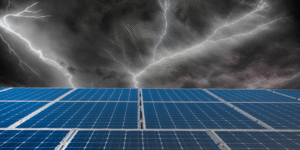
- +639973666667
- business@first-powersolar.com
- The World Centre, Sen. Gil J. Puyat Ave, Makati, Metro Manila

When considering the installation of a solar energy system, determining the right size is crucial for maximizing energy production and ensuring that your investment pays off. Here are the key factors to consider when sizing a solar system:
Sizing your solar system doesn’t have to be complicated, but it does require careful consideration of several factors. By understanding your energy consumption, evaluating environmental conditions, planning for future needs, and consulting professionals, you can determine the ideal solar system size for your home or business. Taking the time to assess these factors will help you optimize energy production and ensure a smart financial investment in renewable energy.
Empowering a sustainable future with cutting-edge solar solutions, First Power Solar Inc. is committed to delivering reliable and efficient renewable energy for businesses
Get updates on special events, news & trends